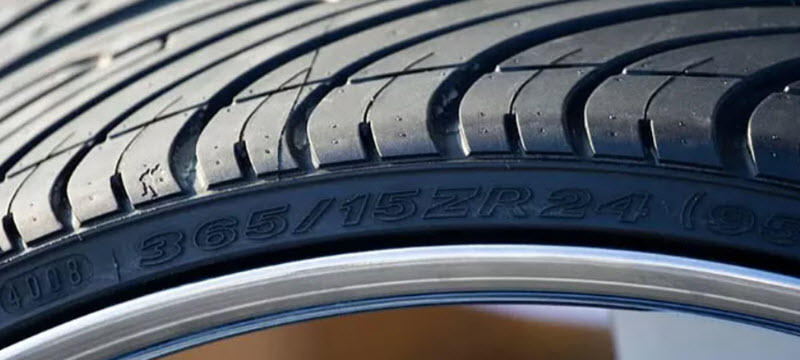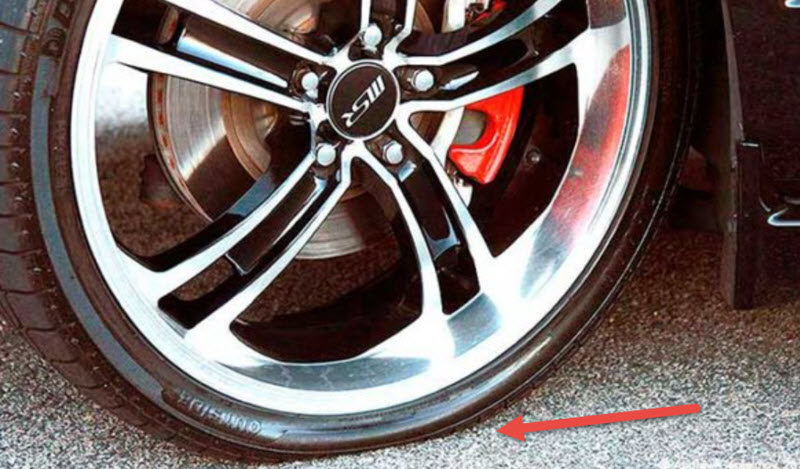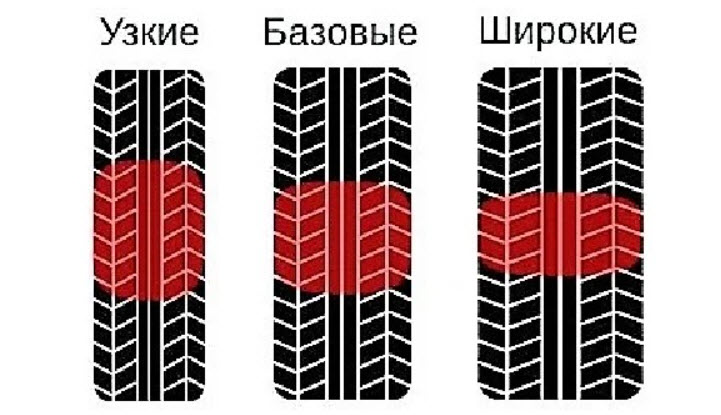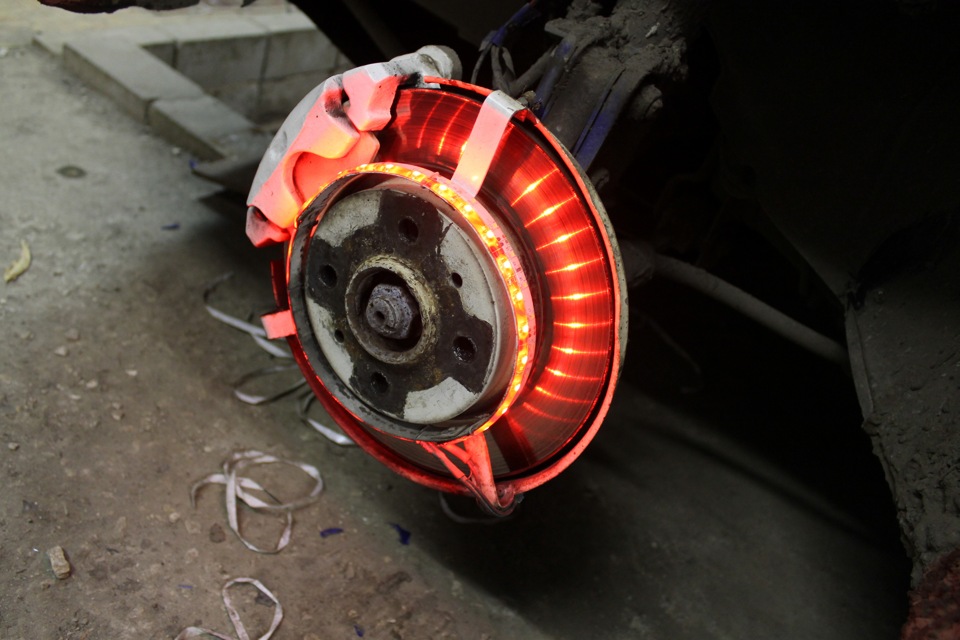
Which tires are considered low profile, recommended pressures and top brands
Content
The profile of a tire is not exactly what it looks like when viewed from the side, although some of its properties can be appreciated in this way. The profile is the percentage ratio between the height of the tire from the seating edge of the disk to the contact patch with the road and the transverse width between the sidewalls. That is, the smaller it is, the closer the tire is to what the automotive people aptly called "duct tape".

What tires are called low profile
The concept of low profile in its numerical expression is gradually changing according to the trends in the development of automotive technology. What used to be considered extremely dangerous and unreliable on a bad road (and there were no others), as well as uncomfortable and harsh on the background of more typical examples, would now be called at best a "meaty" rubber for off-road entertainment.
And a modern tire of the widest use on a variety of budget civilian cars would then be recognized as an elite product for circuit racing.

However, for definiteness, it is necessary to stop at some value. Do not consider, as was recently accepted in the technical literature, the threshold value of 80%. This is not serious, such a profile is used only for off-road tires, where everything is different, including classification, terminology and measurement system.
It is more logical to consider a value of the order of 60% as the boundary. This becomes clear when you look at the widely used crossover wheels with a 65% profile. It is unlikely that now someone will say that these are low-profile tires.
Advantages and disadvantages
Judging by the trend towards a decrease in the percentage, such rubber has a lot of advantages. Not quite so, but they are available, and quite obvious, accessible to both experienced drivers with sports skills and beginners:
- first of all, ceteris paribus, on a low profile, the wheel slip angles are smaller, arising from the displacement of the contact patch relative to the landing site on a rigid rim, this proportionally improves the car's handling;
- the low mass of rubber helps to reduce the moment of inertia, that is, it saves fuel and improves dynamics;
- while maintaining a reasonable rolling radius of the wheel, it becomes possible to increase the landing diameter of the disc, which allows you to place larger and more massive brakes inside it, and athletes know that their power affects the average speed no less than the engine;
- many people like the look of the car with large wheels and reduced rubber height, but this is already individual;
- the trade-off between tire pressure, contact patch and stall limits into lateral or longitudinal slip is simplified, i.e. you can corner faster and brake with more deceleration without locking up.

All this does not mean that a universal solution to all problems has been found by reducing the height of the tire.
There are enough disadvantages:
- the main thing in domestic conditions is low reliability when working on a bad road, the low side is easily flattened, there is a short circuit of the bumps on the metal through the tire cord with damage and subsequent swelling or explosion;
- comfort is also proportional to the percentage, a low tire with increased pressure does not work out small bumps;
- everything that could not be extinguished in a thin tire comes to the suspension;
- an unpleasant practical combination - an increased risk of damage and the high price of "modern" rubber;
- weak, relatively fast wearing tread, both due to geometry and composition of the mixture.
Even improving the grip properties of such rubber has a negative side. The breakdown into a slide occurs suddenly, albeit at a higher level of strength.
After that, as always, the resistance decreases abruptly, but this drop is much more noticeable with low-profile tires. Restoring the clutch becomes even more difficult.
Rules for choosing low profile tires
The basic law of tire selection is not to try to violate the requirements of the car manufacturer. All issues of combining incompatible properties have already been resolved by him and taken into account in the design.
Trying to improve the ability of the car by changing the height of the profile, you can bring the chassis to a dangerous state that even the driving master cannot handle.
Real tuning is carried out by specialists who have the appropriate education or at least rich experience in design and testing activities.

In any case, when choosing non-standard tires, it is necessary to combine this with a change in the geometry of the disks. It is important to keep the departure parameters, which is related to the wheel alignment and rollover shoulder. And understand how the rolling radius is calculated when changing tire sizes.
Low profile tire basics
The lower the profile, the more attention should be paid to the wheels. Otherwise, following fashion can be too expensive.
What should be the pressure
The recommended pressure is indicated by the vehicle manufacturer for each item from the list of permitted sizes. It depends on temperature and axle load, this has to be taken into account. And much more control.
If high-profile wheels endure a pressure drop of even a third of the minimum allowable, responding to this with only an increase in fuel consumption and a decrease in dynamics, then low-profile ones will quickly fail. And pumping with a margin is extremely harmful, the car will turn into a hard sports equipment.
How tires affect suspension
The lack of comfort is not the worst thing. Hard low rubber overloads the suspension. Much more often you will have to change its consumables, these are shock absorbers, bushings, silent blocks, ball bearings and tips.
Combined with the bumpiness on small bumps and the high price of the tires themselves, this will make you wonder if a lowered profile is necessary.
TOP-3 manufacturer
Low profile tires are produced by all tire manufacturers in the world. The choice of the best is a moot point, competition rarely allows one manufacturer to win all once and for all. But an approximate rating can be offered.
Michelin - a company from France, produces many recognized as the best tires in the world. It may not be true, but definitely the purchase of these tires will not disappoint, soft, durable rubber with excellent tenacity on dry summer roads, that is, optimal for low profile wheels.
Bridgestone - Japanese manufacturer. Tires have a long service life, durability and good grip. Many manufacturers choose them for conveyor assembly of machines.
Continental - a West German company that produces products that often win many independent tire tests.
Serious German technology and the struggle for quality ensure successful competition in the most economically tough automotive rubber market.
